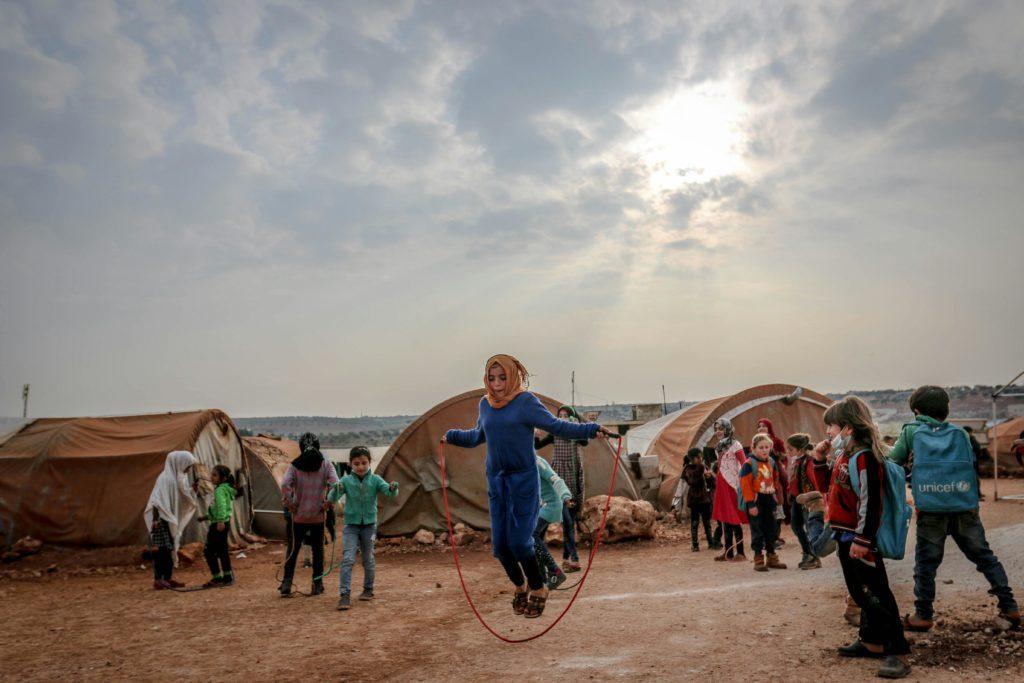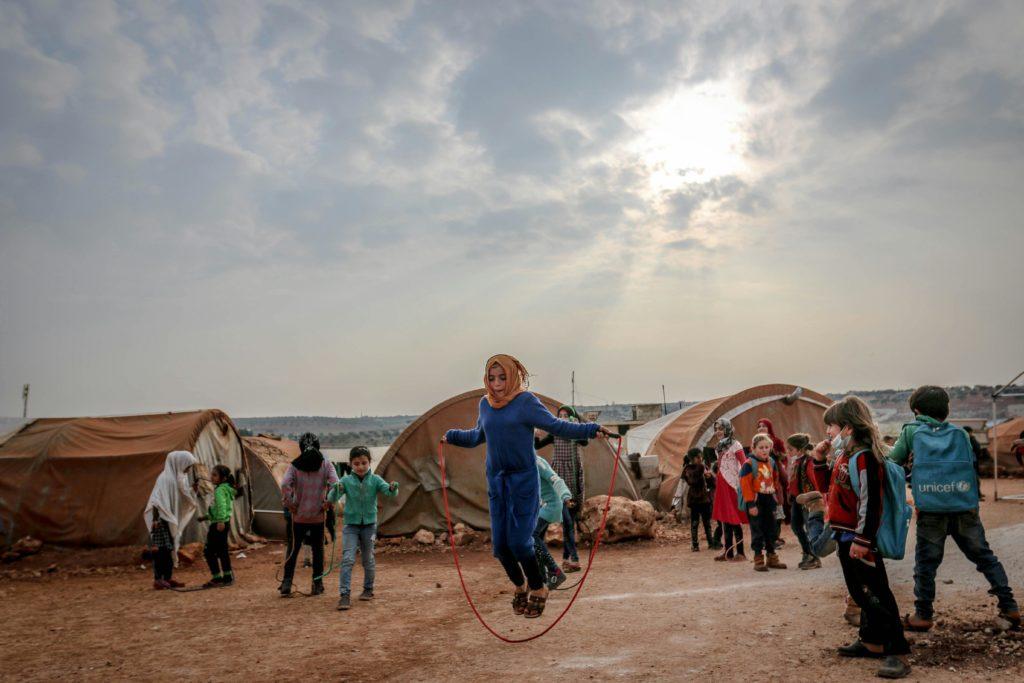
What are the hidden costs of war, and who suffers the most as a result? The horrible reality of war has an impact on millions of youngsters worldwide. The psychological and emotional effects of war are typically more subtle but no less harmful than the physical hazards.
One in six children worldwide, according to Save the Children, resides in areas impacted by armed violence. 200 million youngsters live in the world’s most dangerous war zones. Countries currently affected by (civil) war or conflict include Syria, Palestine, Gaza, Libya, Iraq, South Sudan, DRC etc. Sadly, the list is getting longer and longer, it seems. In these settings, people are constantly concerned about being hurt and having their rights violated. Children who live in places affected by war encounter a variety of difficulties that endanger their mental health and development, including exposure to violence, displacement, loss of loved ones, deprivation of basic requirements, and disruptions in education. These difficulties may have a long-lasting impact on kids’ well-being, limiting their capacity to adapt, learn, and grow.
In this article, I will share some early insights from a systematic review I am currently conducting on the impact of conflicts on children’s mental health – using Syria as a case study. I hope to raise awareness and contribute to the broader conversation on this critical issue.
The Syrian Case Study
Syria is a country that has experienced a long-running war with devastating consequences. Millions of people have been displaced, subjected to violence, and lost their homes during Syria’s civil war, ongoing since 2011. The majority of Syrian refugees have remained in the Middle East, but a large number have migrated to Europe. Approximately 5.5 million Syrian refugees reside in neighboring countries, including Turkey, Lebanon, Jordan, Iraq and Egypt. More than 7.2 million Syrians remain internally displaced within their own country. Around 90% live below the poverty line and 70% of Syria’s population needs humanitarian assistance.
It goes without saying that children have also been profoundly affected by Syria’s civil war. Children exposed to armed conflict are more likely to develop mental health problems (compared to children in more peaceful environments). True, it is critical to recognize individuals’ (and certainly children’s) resilience and diverse reactions to such adversity. While some may experience psychological distress, other children can exhibit remarkable strength and adaptability. By and large, though, there’s a big risk of developing mental health problems for many of these kids. They run the risk of experiencing Post-traumatic stress disorder (PTSD), sadness, anxiety, violence, and behavioral issues, among other mental health issues. These illnesses can harm children’s functioning and quality of life, as well as their relationships, self-worth, and academic success. In one study of children affected by the ongoing Syrian Civil War, 60.5% met the criteria for at least one psychological disorder. A study conducted in Turkey found that among Syrian refugee children and adolescents aged 8 to 17, the prevalence of depression (12.5%), PTSD (11.5%), and anxiety (9.2%) was high. Family and caregiver support is critical in developing resilience, and interventions should aim to strengthen rather than undermine these relationships. It is critical to avoid broad generalizations and instead provide tailored support that recognizes each child’s unique experiences during conflict.
Then there’s the issue of education, vital for children who are growing up – even more so for uprooted children. More than 75 million children between the ages of 3 and 18 who reside in 35 crisis-affected nations see their learning opportunities and quality of education disrupted, according to UNICEF. In Syria, the war has damaged or destroyed one out of every three schools. The remaining schools and classrooms are frequently overcrowded, with inadequate sanitation, water, and electricity. Over 2.4 million children (many of them internally displaced) are out of school, and 1.6 million are at risk of dropping out.
The situation is equally dire for Syrian refugee children in neighbouring countries. Today, over 47% of Syrian refugees in the region are under the age of 18. More than a third of them do not have access to education. A (2021) study by Vivian Khamis study found that the psychosocial adjustment of Syrian refugee school-age children who resettled in Lebanon and Jordan, is significantly influenced by a complex interplay of pre-trauma, trauma-specific, and post-trauma variables. These variables contribute to a variety of problems in educational settings, including learning difficulties, behavioral issues, and social integration. Khamis’ research emphasizes the importance of addressing these multifaceted issues to improve the educational and psychosocial outcomes for Syrian refugee children, who are particularly vulnerable.
Syrian refugee children have typically been exposed to a variety of war-related traumas in Syria, while the escape journey and refugee camps pose(d) additional risks to their lives. Displacement and family stressors exposed them to poverty, hostility from their peers, educational difficulties, child labor, and domestic violence. These traumatic experiences were mediated and magnified by familial interconnected processes, such as the intergenerational transmission of trauma, harsh parenting styles, parental control, and parentification. By way of example, a survey of 339 Syrian refugee children aged 10 to 17 in Jordan found that all had experienced at least one traumatic event. Out of these, 48.6% reported exposure to highly traumatic events such as hostage-taking, kidnapping, or imprisonment. Meanwhile, displacement, poverty, stigma, lack of awareness, cultural differences, and language barriers all make it difficult for Syrian refugees in Jordan to access mental health services.
Way forward
As is clear from the above, the hidden costs of war go beyond physical destruction. Children pay a high price, with their futures shaped by trauma and disrupted development. To mitigate these long-term effects, the global community must prioritize their well-being and take concrete, actionable steps. At the global level, initiatives such as UNICEF’s cash grants to unaccompanied and separated children provide some immediate relief and security. Art therapy has shown promise in improving the mental health and resilience of Syrian refugee children by providing a safe space for them to express their emotions and process their trauma. Furthermore, integrating refugee children into national education systems and facilitating their access to formal and non-formal education can significantly improve their chances.
More in general, we advocate for a comprehensive approach that includes medical care, mental health and psychosocial support, and prevention of/and response to gender-based violence. These services are critical for Syrian families, whose lives have been shattered by conflict. In this way, immediate health care can be provided while also laying the groundwork for long-term recovery. War Child, a global alliance currently active in 19 countries working to improve the resilience and wellbeing of children living with violence and armed conflict, has been actively responding to the Syrian crisis since 2012. They are providing child protection, education, and psychosocial support interventions via a network of ‘Safe Spaces’. These programs help children process their experiences and plan for a better future, allowing them to face challenges head-on and thrive in the face of adversity.
We owe them that better future.

Photo by Ahmed akacha via Pexels: https://www.pexels.com/photo/poor-ethnic-girl-with-jumping-rope-among-children-6507744/
It’s a very informative and articulate article making it simpler for a lay person to understand a global issue in an easy manner. Hoping for more such pieces in the future too.
Thank you so much Preaksha.